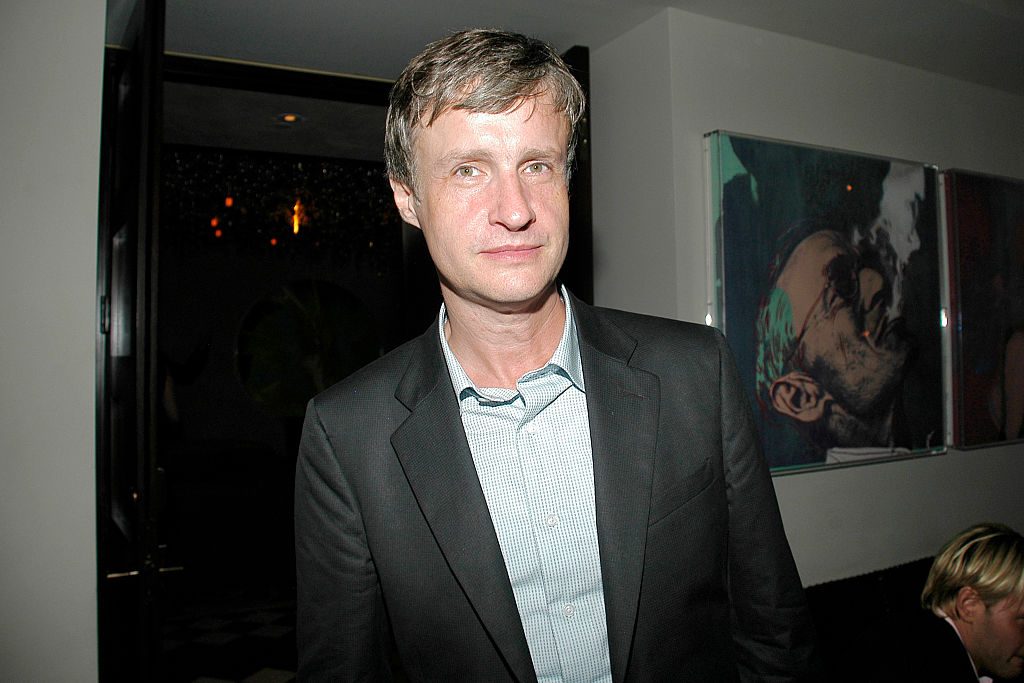People
Donald Baechler, New York Artist Known for His Cerebral Approach to Simplistic Imagery, Has Died at 65
The cause was cardiac arrest, his gallery confirmed.

The cause was cardiac arrest, his gallery confirmed.

Taylor Dafoe

Donald Baechler, the New York-based painter, sculptor, and collage artist whose brand of gleeful, deceptively simple imagery belied a rigorous commitment to formalism, died this Monday, April 4. He was 65.
The news was announced by the artist’s longtime New York gallery, Cheim & Read. Cardiac arrest was the cause of death, a representative from the gallery confirmed.
“Donald is a great and unique artist, and we are deeply saddened by his sudden and unexpected passing,” the spokesperson said. Our thoughts are with his family and his partner who survive him.”
Born in Hartford, Connecticut, in 1956, Baechler earned a BFA from the Maryland Institute College of Art, and an MFA from Cooper Union. Exchange students at the latter institution introduced him to German art, and after graduating, he went to study at the Hochschule für Bildende Künste—Städelschule in Frankfurt.
Returning to New York in 1980, Baechler made a name for himself in the heady downtown painting scene. Early exhibitions came through legendary gallerist Tony Shafrazi, whom the artist had befriended, and his work was often shown alongside that of Jean-Michel Basquiat, Keith Haring, and other Neo-Expressionists. But unlike those artists, whose roots traced back to Pop and street art, Baechler aspired to a style more in line with the cerebral figuration of contemporary German painters, like Georg Baselitz, Sigmar Polke, and Gerhard Richter.
“I’m an abstract artist before anything else,” he told David Kapp in a 2000 Bomb interview. “For me, it’s always been more about line, form, balance, and the edge of the canvas—all these silly formalist concerns—than it has been about subject matter or narrative or politics.”
RIP to a friend. Once in Paris a woman told Donald she’d buy his piece but it had a curse word on it. He went to a hardware store, got paint, covered the word and said, “now buy it.” She did. https://t.co/1Rj353NxBf
— David Marcus (@BlueBoxDave) April 5, 2022
Baechler was selected for the Bienal do São Paulo in 1987 and the Whitney Biennial in 1989, and had major solo exhibitions at Cheim & Read, Galerie Thaddaeus Ropac in Paris, and the Museum der Moderne in Salzburg. Throughout his career, Baechler featured innocent, often childlike imagery in his work—flowers, faces, and animals were favorite subjects—even as his own process grew increasingly labor-intensive. Atop his canvases the artist often collaged comic strips, advertisements, fabric swatches, and other found materials, which he collected assiduously. The results could feel slapdash, the process behind them was anything but.
“Is the edge of this line painted correctly? Should these drips be here or not? I think about these things for a long time before I change them, or I change them a hundred times before I get them right,” he said in a 1990 interview with Lacanian Ink. “I feel like I’m sculpting somehow. I’m always paring away at the image.”
The artist turned to sculpture later in his career, producing three-dimensional—and yet still flat-feeling—versions of the figures that appeared in his work on canvas. One particularly notable example, a 30-foot-tall aluminum sculpture of a woman called Walking Figure (2008), lives at the Francis S. Gabreski Airport in Suffolk County, New York. (Upon being installed in 2014, the artwork proved to be quite controversial among locals.)
Baechler’s work has been collected by numerous institutions, including the Museum of Modern Art and Whitney Museum of American Art in New York; the Museum of Contemporary Art in Los Angeles; the Stedelijk Museum in Amsterdam; and the Centre Georges Pompidou in Paris.
Despite the sometimes faux-naîf imagery, Baechler was invested in communicating what he called the “illusion of history” in a painting. As he told Kapp in Bomb, “If you drag the brush across the canvas you know more or less what’s going to happen. But my surface enforces the process of mistakes and erasure and change, it almost insists on change.”